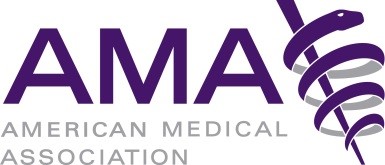November 13, 2023 — As drug shortages continue to worsen and negatively impact patient care across the U.S., the American Medical Association (AMA) today adopted policy during the Interim Meeting of its House of Delegates strengthening its ongoing efforts to address this growing public health crisis. The AMA’s new policy supports diversifying drug manufacturing and supply chains and stabilizing the generic drug market, as well as opposing practices such as pharmacy benefits manager formulary restrictions that worsen drug shortages.
Specifically, the new policy supports innovative approaches for diversifying the generic drug manufacturing base to move away from single-site manufacturing, increasing redundancy, and maintaining a minimum number of manufacturers for essential medicines. Under the new policy, the AMA opposes the practice of preferring drugs in shortage on approved pharmacy formularies when similarly effective drugs, in patient-appropriate formulations, are available in adequate supply yet otherwise excluded from formularies or coverage plans.
“Drug shortages are the highest we’ve seen in a decade, making it more and more difficult for patients and physicians across the country to get necessary medications,” said AMA Immediate Past President Jack Resneck, Jr., M.D. “The nation’s drug supply shouldn’t be in constant turmoil because there aren’t enough manufacturers, or the profit margin is too thin to incentivize production. We must continue to push for actions to mitigate drug shortages that will help ensure the drug supply chain is more resilient and adaptable so our patients can get the medications they need when they need them.”
According to the American Society of Health-System Pharmacists (ASHP) statistics, a spike in new drug shortages in the year 2022 has led to the highest levels of drug shortages in the United States since 2014. For the first quarter of 2023, the five classes of drugs facing the largest number of shortages include, central nervous system therapies, antimicrobials, fluids/electrolytes, hormones, and chemotherapies.
Aimed at combatting these drug shortages, the newly adopted policy was informed by a Council on Science and Public Health report that examined three root causes for drug shortages: the evolving prescribing landscape, modern challenges of advertising and patient demand, and the economics and fragility of generic drug manufacturing. The report also noted that drug shortages can be the result of factors such as decades-long policy choices causing a decline in domestic manufacturing, production quotas, and severe weather.
With a limited number of generic drug manufacturers, the majority of which are located overseas, any disruption to the marketplace can result in a multi-month-long shortage. The report outlines potential solutions, including exploring non-profit or government-owned generic drug manufacturing. The new policy supports stabilizing the generic drug market through activities led by non-profit or public entities, including prioritizing instances of generic drugs that are actively, at-risk of, or have a history of being, in shortage, and for which these activities would decrease reliance on a small number of manufacturers outside the United States. The AMA’s new policy also encourages government entities to stabilize the generic drug supply market by piloting innovative incentive models for private companies which do not create artificial shortages for the purposes of obtaining said incentives.
The policy adopted today builds upon AMA’s existing efforts to address the growing drug shortages and ongoing supply challenges for essential medications. Recognizing that prescription drug shortages have a widespread impact on patient care and treatment, the AMA will continue its commitment to work with other interested parties to further evaluate and implement recommendations that contribute to solutions for this critical public health issue.
About the AMA
The American Medical Association is the physicians’ powerful ally in patient care. As the only medical association that convenes 190+ state and specialty medical societies and other critical stakeholders, the AMA represents physicians with a unified voice to all key players in health care. The AMA leverages its strength by removing the obstacles that interfere with patient care, leading the charge to prevent chronic disease and confront public health crises, and driving the future of medicine to tackle the biggest challenges in health care. For more information, visit ama-assn.org.




























